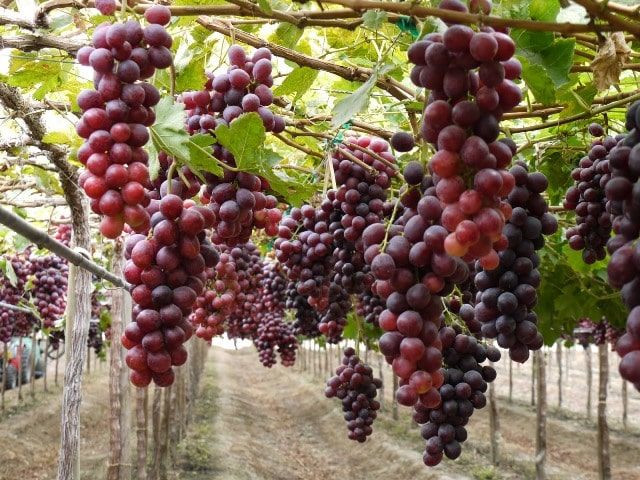Mexico opened markets for exports of grapes, blackberries and bananas, among other products.
From September 2019 to June 2020, the Mexican government completed eight negotiations to open markets for exports of the following merchandise: table grapes to South Korea; blackberries to China; blackberry fruits to South Africa; cuttings without fig roots to Chile; forage grass seed (Brachiaria brizantha and Brachiaria brizantha x B. ruziziensis) originating from Mexico to Brazil; fresh asparagus shoots to Colombia; botanical seed of sugar cane to Guatemala and fresh mango with irradiation treatment to Australia.
With the signing of the Protocol of Phytosanitary Requirements for the Export of fresh banana fruit from Mexico to China, in January 2020, the first shipment of bananas to that destination left.
During the first quarter of 2020, exports were made for 58 tons of bananas originating in Chiapas and Tabasco.
Exports
Mexico broke a record in agricultural surplus with the United States by registering a positive balance of $ 9.189 million in the current season, from October 2019 to June 2020.
According to data from the Department of Agriculture (USDA, for its acronym in English), this balance is the result of the difference between Mexican exports for 23,082 million and US sales for 13,893 million.
Plant health
From September 1, 2019 to July 31, 2020, through the National Campaign against Fruit Flies, 52.18% of the surface of the national territory was conserved as a free zone, equivalent to 1 million 022,416 square kilometers, with which which are protected nationwide 693,248 hectares of the 20 main host products of the plague, whose annual production is estimated at 8.4 million tons and represents a commercial value of 31,832 million pesos.
During the same period, new phytosanitary measures were established for the entry of merchandise from abroad; and the work plan for stone fruits (stone fruits) from Spain to Mexico was protocolized under a systems approach and cold treatment in transit.
Derived from the interceptions of khapra weevil in rice from Uruguay, during this period more restrictive phytosanitary measures were implemented as it was considered a pest with a high potential risk for the national economy.
![]()

